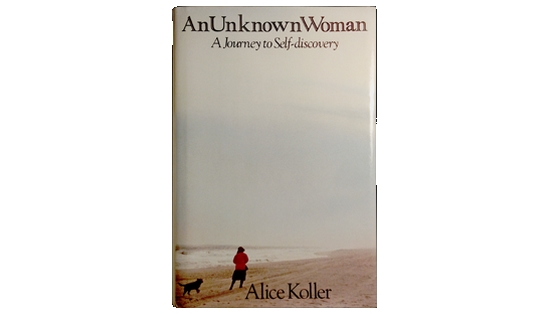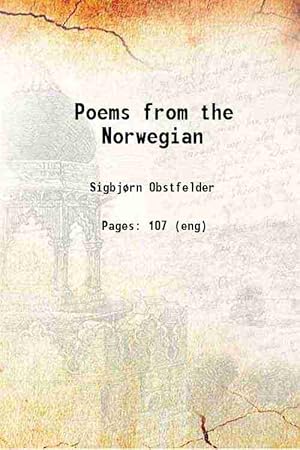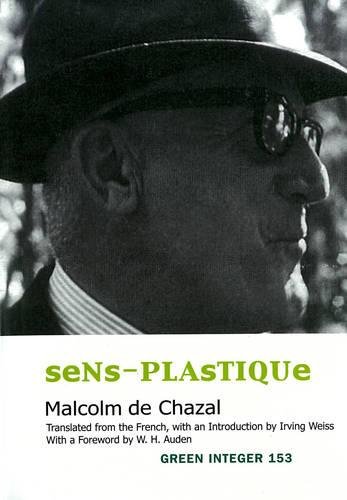


http://www.alicekoller.com/
"I walk: desk to couch, couch to table, table to fireside chair,
chair to stove, stove to refrigerator, and there I lean, crying...
Why am I here? There's no place else to be. What am I doing here? I
don't really know. What am I trying to do here? To find some way to
live."This is the true story of a courageous journey - a journey
inward, undertaken alone, in the middle of winter, thirty miles out
to sea. It is the story of Alice Koller, who went to Nantucket to
find - Alice Koller. During the course of her extraordinarily brave
and honest self-analysis, she found and discarded the deepest source
of her profound unhappiness. Alone, she faced all that she had fled
from throughout the thirty-seven years of her life. Alone. she
discovered the beginnings of her own vision for a new life.
The intensely
personal account of a philosopher's struggle to articulate the
process of coming to understand oneself, "An Unknown Woman"
speaks with startling intimacy to the unknown person within each of
us.
Written in 1962-63 by a 37-year-old woman, this tortured, fumbling,
sprawling therapeutic self-analysis may still--in its very openness
and lack of pretension--speak directly to other persons (especially
the young) mired in an identity crisis or general weltschmerz. In
1962 Alice Koller, unmarried, was a drifting Ph.D. in philosophy with
no scholarly or career commitments. ""I just don't have a
life. I'm just using up a number of days."" With her
newly-acquired German shepherd pup Loges, she escapes to a remote
cottage on wintry Nantucket--there to ""break rules""
about when to eat and sleep, to walk by the ocean and tentatively
respond to the zany devotion of Loges. But her intent is to sift
through the ashes of her life: ""I'm here to understand
myself."" Weeping often, Keller reviews a steady march of
failures: at acting school, she didn't measure up; the Ph.D. was a
lengthy obstacle course with many downs; the men she loved (and still
does) pulled away. She couldn't see the reality of situations in
which she found herself; she couldn't hear what others were really
saying; and worst of all, she couldn't feel her own purposes, or know
what she wanted. Was there any core of self that could honestly want?
At first Keller traces her vacancy--her need to see herself only as
reflected in others--to an early struggle for her mother's love and
approval, never given. Later she understands that she acted as if she
had feelings, only to please others. On Christmas day, alone, she
considers suicide. Then, looking calmly on the unimportance of living
or dying, she attends an academic convention in New York, where she
practices ""saying what I mean"" and accepts,
finally, that the former lovers she meets there are gone forever.
Back on Nantucket, she coolly appraises her losing relationships and
turns inward to the spark of self. She finds two loves and
delights--Loges and walking by the sea: a tiny beginning but truly
coming, at last, from ""the self I have."" The
protracted meditations are relieved only by Loges' antics; but the
untutored groping for certainty within loneliness, depression, and
fear may strike a chord in many. - Kirkus Reviews
I’ve crossed a
bridge unlike any other. I’m no longer among the living but among
those who are about to die. From this side I can look back at what it
was to be alive. All those people whose approval I sought: none of
them is here now. The half dozen people I’ve thought of as my
friends: not here either. I’m looking my own death in the face, and
there’s no one to stand here with me. Alone, dying, as I was alone
living.
From this side, how
can it matter what anyone else thinks? From this side, how can it
matter what I look like? From this side, how can anything at all
matter? Is now the time, then? Is it?”
AN UNKNOWN WOMAN by
Alice Koller is one of those rare and timeless books that improves
with repeated rereading. Written in straightforward, even stark,
prose it contains, nonetheless, profound insights into the
psychological and philosophical issues of self-identity and what it
means to survive in a world that no longer makes any kind of sense.
Having reached an
existential crisis at the end of her thirties, Alice Koller decides
to remove herself, quite literally, from the workaday world and the
tedium of the daily grind. Despite having a Ph.D. in Philosophy from
Harvard University, she has spent many years working as a jobbing
clerk and typist, flitting from one city to the next, her only aim to
earn enough money to keep body and soul together.
More specifically,
her quest to find the “perfect relationship” with a man has left
her disillusioned with humanity and its vain hopes and empty promises
of ever finding a meaningful and worthwhile life. - Paula Marvelly
“When a woman asks to be alone,” Jessamyn West wrote in Hide and
Seek, “… alone, alone, truly alone … a woman feels wicked,
unloving, defying God and man alike.” If this is true, then Alice
Koller could be considered America’s wickedest woman. Since the day
in October 1962 when she packed her few belongings and a German
Shepherd puppy named Logos into her car and set out for Nantucket
Island, she has pursued, nurtured, relished, contemplated, and
celebrated solitude to an extent no writer of our time could match.
An Unknown Woman: A
Journey to Self-Discovery is her account of the three months she
spent in a rented summer house out by the shore, walking along the
beach, reflecting on her life, and trying to achieve some
understanding of the most fundamental questions any human can ask of
herself: Who am I? What am I here for? What do I want from my life?
At the time she
decided to take the few hundred dollars she had in the world and head
someplace remote, isolated (and cheap), Koller had already been
struggling to exist for almost twenty years. After finishing high
school in Ohio, she accepted a chance to act and study as part of the
acting company based at the Goodman Theater in Chicago. She soon grew
disenchanted with acting, though, and began attending the University
of Chicago. At a time when few women were going into graduate
schools, she determined to carry on with her studies. Relying on
countless low-paying clerical jobs, she eventually worked her way
through to earning a Ph.D. in philosophy at Radcliffe (now merged
into Harvard) in 1959, at the age of 34.
She quickly
discovered, however, that her doctorate meant little in an academic
world still overwhelmingly dominated by men. When she asked one of
her professors for advice on getting a job, he dismissed her with a
curt reply: “You’re too late,” which likely referred more to
her age than the time in the academic year. And so, after thirteen
years of study, she found herself taking the same kind of low-paid
work as she had as an undergrad. To add to her woes, she’d watched
her second long-term serious romantic relationship end with the man
abruptly leaving to marry another woman.
“I don’t have a
life,” she concludes, looking at herself in the mirror. “I don’t
live anywhere. I perch.” “It has to stop,” she decides. “Can’t
I just stop, right now, and try to figure out what I’m doing? What
I should be doing?” And so, after a little hunting, she finds a
house outside Siasconset on Nantucket Island she can afford to rent
for at least three months (due to the off-season). She also decides
she needs a dog “To warn me about strangers,” and buys a puppy
she names Logos in tribute to the philosophy she has spent the last
decade studying: “Logos: the rational principle of the universe,
the Word, reasoned discourse.”
On her very first
day in the house on Nantucket, her search for answers begins with a
very practical question (albeit a question few men in the same
situation would ever ask): “What will I look like now that no one I
know will see me?” And yet her answer (“Color will matter”)
starts Koller on her way. “It’s my first clear judgment, my
judgment. A very tiny step I take. How will knowing that I trust my
eye for color take me to knowing how I want to live my life? The
chasm stretches beneath me.”
It would be easy to
dismiss An Unknown Woman as the epitome of navel-gazing. A week into
her stay, she writes:
Wanting. What have I
wanted? No. What have I wanted? Not right yet. What have I wanted?
When I read this, I
immediately thought of the Beyond the Fringe sketch parodying the
recollections of Bertrand Russell and the absurdity of logic as a
philosophical discipline. Russell recounts a visit to his fellow
philosopher, G. E. Moore:
… there was Moore
seated by the fire with a basket upon his knees.
“Moore,” I said,
“do you have any apples in that basket?”
“No,” he
replied, and smiled seraphically, as was his wont.
I decided to try a
different logical tack. “Moore,” I said, “do you then have some
apples in that basket?”
“No,” he
replied, leaving me in a logical cleft stick from which I had but one
way out.
“Moore,” I said,
“do you then have apples in that basket?”
“Yes,” he
replied. And from that day forth, we remained the very closest of
friends.
All jesting aside,
though, there is a great difference between playing with semantics
about a basket of apples and digging into the root of your own
identity. Koller calls the thinking she is doing “a kind of
fighting”: “I’m defending, and laying siege, all at once.”
“I’m even the prize,” she jokes, “But I’m also the only one
who’d want it.”
Inevitably
(perhaps), excavation of one’s identity reaches the strata of one’s
family and childhood. In Koller’s case, it leads to the realization
that what she has been pursuing for much of her life is the approval
of a mother who gave her little attention and even less love growing
up: “She’s been an obstacle to be gotten around in everything I
do, everything I’ve ever done.”
From this discovery,
she begins to assemble a sense of self owing to no one else’s
choices but her own. She starts a list of moments in recent memory
that have given her as much of a “sense of fullness” as sitting
with Logos’ head in her lap, scratching behind his ears, and
eliciting a low moan of satisfaction. In four hours, she comes up
with thirty moments. And from this list, she develops an
understanding of what she truly seeks from life: “What I’ll want
to do will have to have this same quality of … what? Fitting me.”
And so she sets out
for her new life. After three months, she is not broke, thanks to a
bit of work she landed analyzing a technical report for some research
firm in Connecticut, but close to it. She has no firm job prospect
and will have to camp out once again in some friend’s house. “And
yet I know some few things,” she concludes. “I love Logos. I must
have him with me.” And “This ocean matters to me.” With these
things and “the idea that other things may join with these,” she
heads back to the mainland. “They are all the self I have. But they
are mine.”
It would be pleasant
to think that this new foundation enabled Koller to launch herself
into great personal and professional success, but the truth is that
it more likely condemned her to a life on the margins of society. She
turned the journal she had kept on the island into a book, but it was
rejected by thirty different publishers over the course of thirteen
years, most often for being “too personal,” until it found a
receptive editor at Holt, Rinehart and Winston. The book became
something of a grass-roots best-seller, racking up sales of over
500,000 copies, mostly in its Bantam paperback edition, over the next
five years.
In 1991, Koller
followed up with The Stations of Solitude (1990), which reviewed her
experience on Nantucket in light of her life and thoughts since
leaving the island. She had a brief stint teaching at the University
of California Santa Barbara, but no long-term teaching jobs. As Diane
M. Quilty Litchfield put it in her Masters thesis on Koller’s work,
“One Woman’s Construction of Self and Meaning: A qualitative
study of the life of Alice Koller” (link), “Indeed, her
employment was so sporadic that she often lived through the
generosity of her friends or on welfare.” Or, as Koller herself
wrote, “During … twenty-five years, I have moved sixteen times …
I forage for my living where the food supply is.”
And yet, Koller
resolutely embraces and champions her choice to pursue a life driven
more by introspection than material comforts: “I essay to write my
thinking. I am a philosopher studying my own mind. And when I look
outward at the natural world, I essay to write my seeing and hearing
and touching.”
In 2008, at the age
of 83, Alice Koller bought her own domain name and set up her own
website, alicekoller.com, on which she solicits “patrons” for a
work in progress titled “Meditation on Being a Philosopher.” It
appears that she’s been renewing her domain name registration
annually since then. It’s up for renewal again in a few weeks, so
I’ll have to check if she’s still keeping it going … a few
months short of her 90th birthday.
Whether
“Meditations” gets finished or not, Alice Koller has been our
closest counterpart to Henry David Thoreau — indeed, has devoted
more years to the principle that only an examined life truly matters
than Thoreau drew breath. And for that, in my view, she deserves to
be celebrated as an American original. - http://neglectedbooks.com/?p=3253
Excerpt from Meditation On Being A Philosopher












